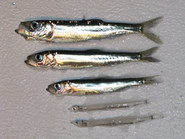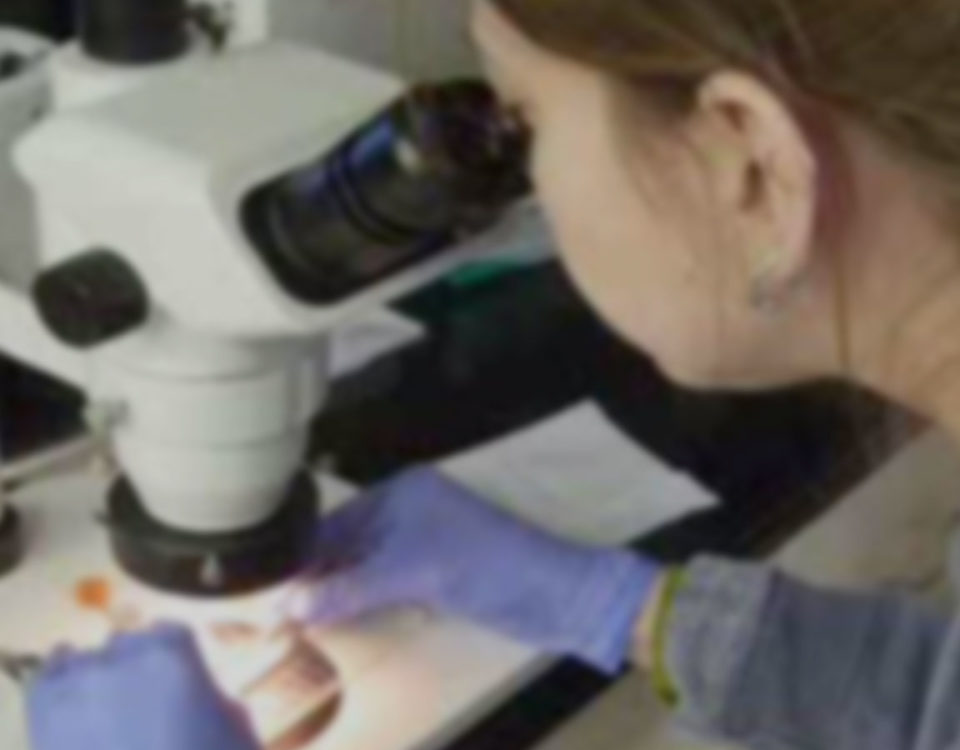Reproductive maturity of herring

PROJECT
Reproductive maturity of herring
Background
Estimation of the total Pacific herring biomass in Prince William Sound requires an understanding of the number of herring that do not spawn in a given year. Our knowledge of the herring biomass comes from the fish that spawn each year. The stock assessment model used by the Alaska Department of Fish and Game (ADF&G) includes the age at which a herring first spawn (or the age at maturation) as a parameter. The maturity function is then used to account for fish not observed during spawn. Thus, knowledge of the reproductive maturity schedule of Pacific herring can facilitate more accurate estimates of herring biomass, which informs management decisions.
Methods
Using a captive population of wild adult herring, we conducted a lab study to determine if they could identify whether individual herring are immature (have never spawned), primiparous (have spawned only once), or repeat spawners. We also tested to see if the age at first spawn could be determined by using growth increments on herring scales. 1,700 measurements of scale growth from herring ages 4-6 collected from PWS spawning populations between 1986-2013 were analyzed. Importantly, by assessing historical scale growth of older individual herring, the scale technique allows for understanding reproductive maturity schedules across the entire population of recruited fish. In 2017 analyzing the history of egg development in the ovaries or, histology, took on a larger role in the hunt for age of maturation. This method relies on several different estimates of gonad development, which include (1) measuring gonads of both male and female herring to determine the ratio of the weight of the gonad to the weight of the whole fish, otherwise known as a gonadosomatic index; (2) visual inspection of the gonads to determine a maturity criteria known as the Hjort scale; and (3) histology of ovaries to determine, at the physiological level, whether there is evidence of past (post-ovulatory follicles) or future (maturation stage of ovarian follicles) spawning.
What we are learning
We confirmed that herring scales can be used to distinguish spawners from non-spawners. Comparison of maturation from histology to scale growth showed that 3-year-old herring preparing to spawn for the first time had significantly smaller growth rates relative to non-spawning 3-year-olds. Scale growth of herring ages 1 and 2 indicated that fish of these ages were immature and did not spawn while ages 3-6 showed growth patterns that equated to spawning activity. Through continuing this work we will learn the proportion of immature and mature three, four, and five-year-old herring that are in the spawning stock, as well as other times of the year, and whether these proportions have changed over time. These techniques will be used to ground-truth reproductive maturity estimates derived from the age-structure-assessment model. During the last year over 1500 herring samples have been obtained from areas around Prince William Sound. Partners at ADF&G, NOAA and local Cordovan fishermen helped in the collection of these samples. Analysis mentioned in the methods section above is currently underway on samples collected in 2018.
PRINCIPAL INVESTIGATOR
Kristen Gorman, Ph.D.PWS Science Center
kgorman@pwssc.org
Johanna Vollenweider
NOAA
johanna.vollenweider@noaa.gov
Ron Heintz
NOAA
ron.heintz@noaa.gov




